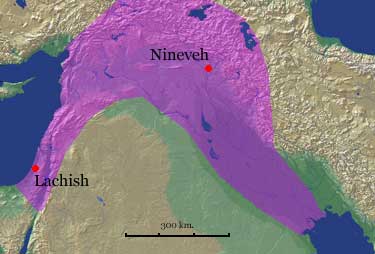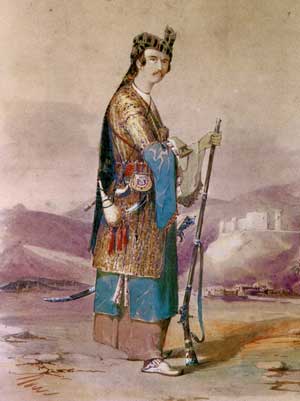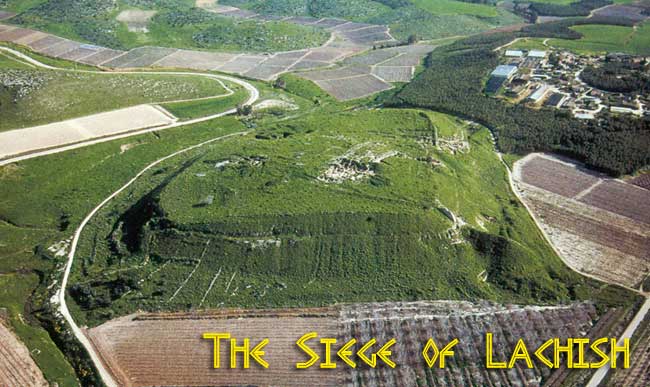
As for Hezekiah the Judahite, who did not submit to my yoke: forty-six of his strong, walled cities, as well as the small towns in their area, which were without number, by levelling with battering-rams and by bringing up siege-engines, and by attacking and storming on foot, by mines, tunnels, and breeches, I besieged and took them. 200,150 people, great and small, male and female, horses, mules, asses, camels, cattle and sheep without number, I brought away from them and counted as spoil.
Prism of Sennacherib
The siege and capture of the Judaean town of Lachish, one of the fortresses that guarded the approaches to Jerusalem, is unique in that there are both words and pictures describing the action. It is mentioned in the Old Testament (II Kings 18; II Chronicles 32) and depicted on the walls of Sennacherib’s palace at Nineveh.
The capture of Lachish was evidently an event of considerable importance to the king for he devoted an entire room to the composition (marked yellow in the plan below). Moreover, the approach to the room was guarded by a series of three pairs of colossal human-headed winged bulls, one pair at each of the three doorways leading from the large courtyard. Normally, these figures are only used to mark the most important rooms in the palace. It is somewhat surprising, then, that the place is not named in any of his accounts of the campaign.
The event itself is depicted in a single tableau, with the whole sequence shown as if they were happening at the same time. So, from left to right you see the approach of the Assyrian army, the assault on the town, the capture of the town, the inhabitants being led into captivity, the leaders of Lachish being tortured to death, and (finally) Sennacherib receiving the report of his commander on the field.
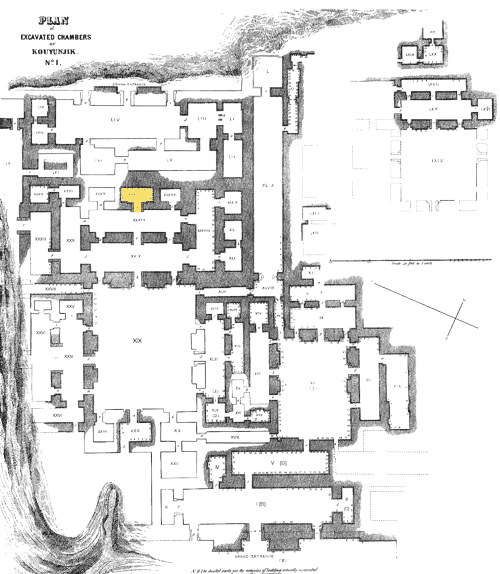
Plan of Sennacherib's Palace at Nineveh showing the location of the Lachish reliefs
Nineveh was one of the first sites to be excavated in the land of Mesopotamia, modern Iraq, having been dug by Austen Henry Layard in the 1840s. Layard was from a generation that was essentially inventing archaeology as they went along. At Nineveh his basic technique was to sink 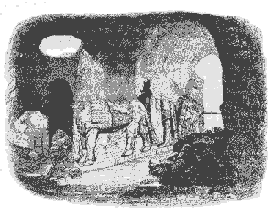 shafts down to the appropriate level and then tunnel along the walls in order to recover the art (left). The walls were mainly mud brick, which meant that, in those days, it was virtually impossible to distinguish from the general matrix of the site. It was only
shafts down to the appropriate level and then tunnel along the walls in order to recover the art (left). The walls were mainly mud brick, which meant that, in those days, it was virtually impossible to distinguish from the general matrix of the site. It was only 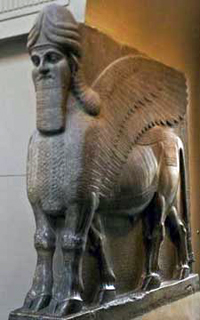 when the workers struck the carved alabaster slabs that line the walls that they were able to trace them. They would then tunnel along the length of them and remove any figurative art that they found along the way.
when the workers struck the carved alabaster slabs that line the walls that they were able to trace them. They would then tunnel along the length of them and remove any figurative art that they found along the way.
The problems of excavation and recovery were compounded by the fact that the palace, along with the rest of Nineveh was thoroughly looted and put to the torch in 612 BC. Given all of the combustibles present, it is not surprising that there was a considerable amount of damage and that many of the reliefs had turned to chalk. Images of the king were especially targeted and there is scarcely a representation of him that has not had its face smashed.
It is impossible to say what the purpose of the room was. As noted above, the approach to the room, with all its colossal winged bull figures, suggests it was a place of great importance to the king. Its size and the fact that it doesn’t appear to lead anywhere, suggests the reliefs were not meant to impress visitors, as was clearly the case elsewhere in the palace.

